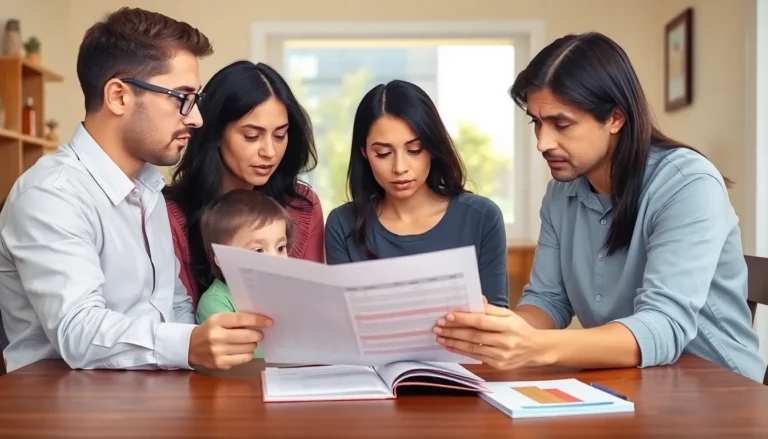Table of Contents
ToggleDiving into the world of Roblox Studio can feel like stepping into a digital wonderland, but importing OBJ files? That’s like trying to solve a Rubik’s Cube blindfolded. Fear not, aspiring game designer! With a sprinkle of patience and a dash of creativity, you’ll soon be importing your custom 3D models like a pro.
Understanding OBJ Files
OBJ files offer a versatile format for 3D models, widely used in various applications. These files contain geometry data that includes vertices, textures, and normals, making them ideal for detailed model representation.
What Are OBJ Files?
OBJ files, developed by Wavefront Technologies, are text files that describe the 3D geometry of a model. They store information about vertices, vertex normals, and texture coordinates. Supported by numerous design software, OBJ files simplify the exchange of 3D objects between applications. Commonly, these files come with an accompanying MTL file, which defines the materials applied to the model.
Why Use OBJ Files in Roblox?
Using OBJ files in Roblox enhances a game’s visual appeal. Game developers can create intricate models that stand out within the Roblox universe. They provide the flexibility to import complex shapes and textures not readily available in standard Roblox assets. Moreover, integrating custom OBJ files allows for unique designs, helping developers differentiate their games and attract players. This customization promotes creativity and enhances the overall gaming experience.
Preparing Your OBJ File
Preparing an OBJ file for import into Roblox Studio requires attention to detail. Following the right steps ensures that your model integrates seamlessly into your project.
Ensuring Compatibility
Compatibility plays a crucial role in the successful import of OBJ files. Use version 1.1 of the OBJ format, as it’s widely accepted by various software. Verify that your 3D modeling tool exports OBJ files without errors. Remove any unsupported features like animations or complex materials. Confirm that the file path doesn’t include special characters or spaces, which may cause import issues. Test your model in a lightweight scene to check performance before finalizing your import into Roblox.
Optimizing Your Model
Optimization enhances the performance of models in Roblox Studio. Simplify the mesh by reducing the polygon count while keeping essential details. Ensure textures are appropriately sized; ideally, use images that are 512×512 pixels or smaller. Limit the number of separate materials to maintain a streamlined look. Check for any overlapping vertices or faces that may create visual artifacts during rendering. Save your model in the OBJ format with both the .obj file and its associated .mtl file to ensure texture materials are applied correctly upon import.
Importing OBJ Files to Roblox Studio
Importing OBJ files into Roblox Studio requires careful attention to detail. Following a precise process helps ensure smooth integration of 3D models.
Step-by-Step Import Process
- Open Roblox Studio and create a new place.
- Navigate to the “Home” tab, then click on “Asset Manager.”
- Select “Import,” then locate the OBJ file on your system.
- Import the associated .mtl file to ensure textures load correctly.
- Adjust import settings as needed, ensuring compatibility with Roblox standards.
- Position the model in your 3D space.
- Test the model to confirm proper appearance and functionality.
Following these steps leads to successful OBJ file integration in Roblox Studio.
Common Issues and Troubleshooting
Import problems can arise during the process. Incorrect file formats can prevent proper loading of models.
Vertices that overlap or unsupported features may cause glitches. Users often face texture issues, particularly if the .mtl file isn’t linked correctly.
To address these problems, check for errors in the modeling software prior to import. Confirm that all necessary files exist in the correct paths.
If issues persist, testing in a basic scene may identify specific concerns. Paying attention to details during the import process typically resolves most common issues.
Best Practices for Using Imported Models
Optimizing imported models enhances both performance and visual appeal in Roblox Studio. Adhering to best practices makes a significant difference in gameplay quality.
Enhancing Performance
Simplifying meshes reduces the number of polygons, improving rendering efficiency. Limiting the number of materials used on a model helps cut down on processing power. Additionally, resizing textures to appropriate dimensions minimizes memory usage. Organizing models into simpler components allows for quicker loading times and better performance. Checking for overlapping vertices prevents unnecessary computational strain. Testing models in lightweight scenes ensures smooth gameplay and identifies potential performance issues early.
Maintaining Visual Quality
Prioritizing high-resolution textures contributes to a detailed and polished look. Utilizing consistent color schemes across models enhances the overall aesthetic cohesion. Avoiding overly complex geometry prevents visual clutter and retains focus on the model’s details. Reviewing model proportions ensures natural appearances fitting the surrounding environment. Configuring shaders correctly can add realism to imported models and improve their presentation. Keeping models clean and well-organized aids in maintaining visual integrity during interactions.
Successfully importing OBJ files into Roblox Studio opens up a world of creative possibilities for game developers. By following the outlined steps and best practices, they can enhance their projects with unique 3D models that captivate players. Attention to detail during the import process is essential to avoid common pitfalls and ensure optimal performance. With patience and a focus on optimization, developers can bring their visions to life and elevate the overall gaming experience. Embracing the versatility of OBJ files not only enriches gameplay but also showcases individual creativity in the vibrant Roblox community.







